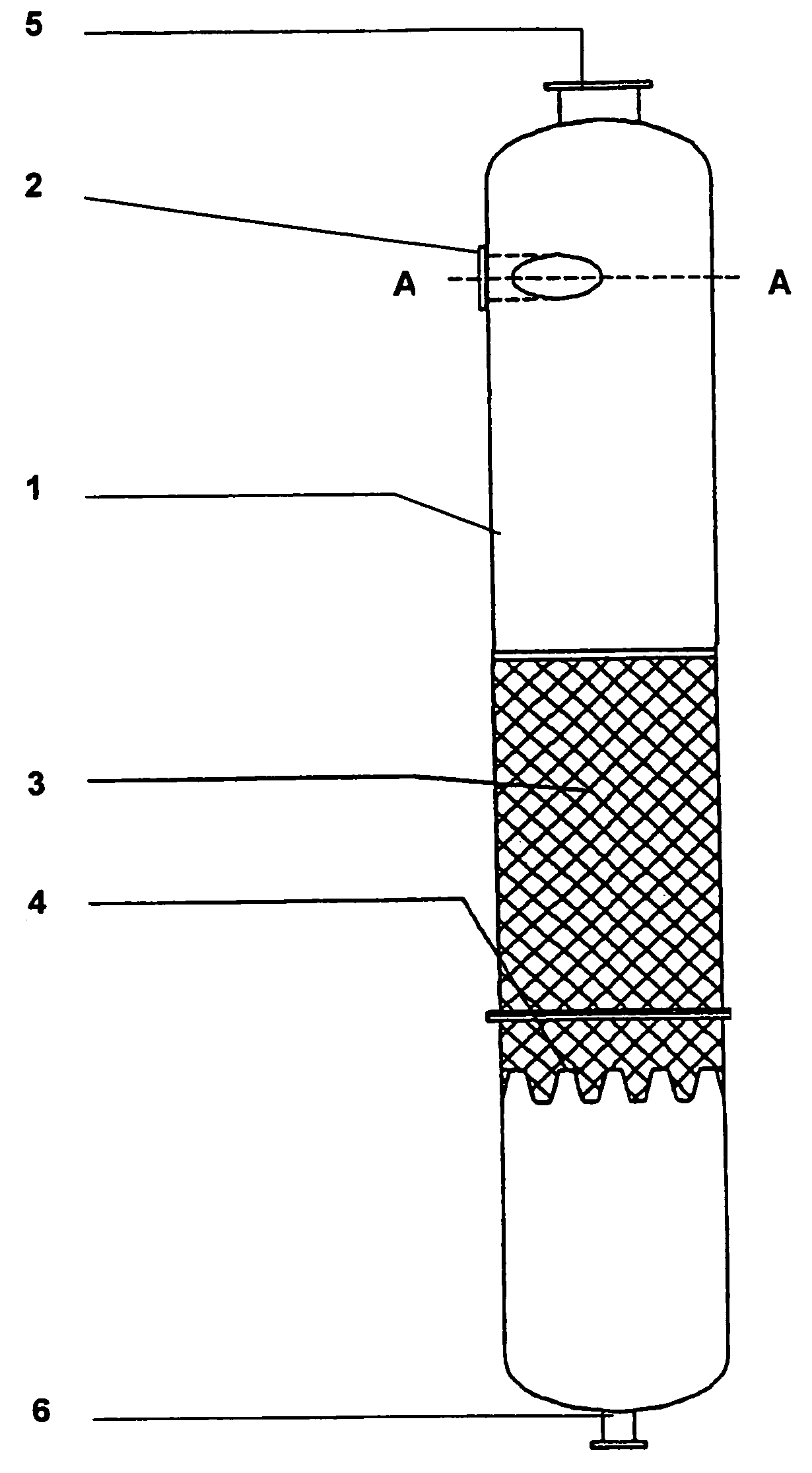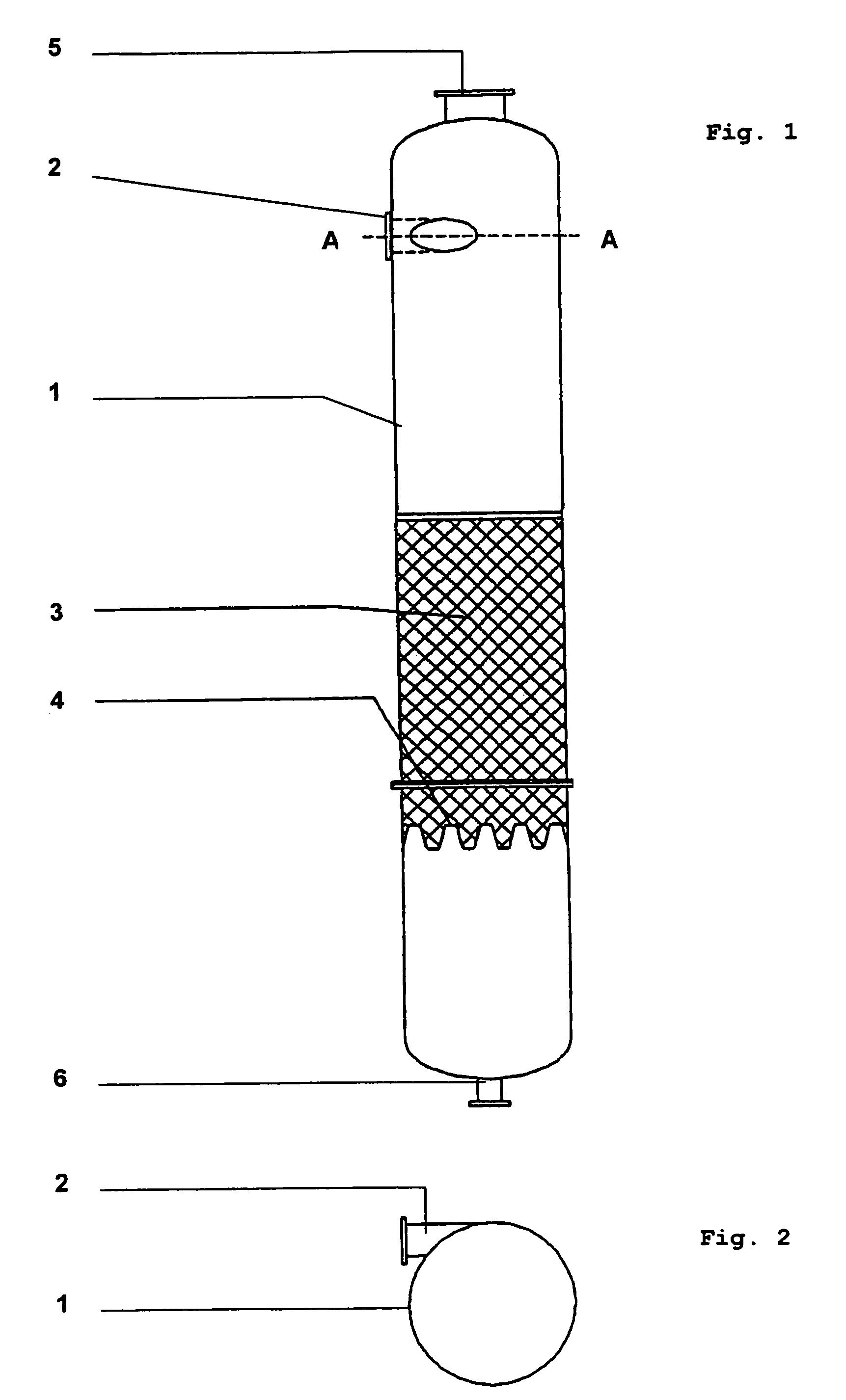Method for the processing of a liquid reaction discharge of the cationic polymerization of isobutene
a technology of isobutene and liquid reaction, which is applied in the direction of separation process, filtration separation, vortex flow apparatus, etc., can solve the problems of undesired secondary reactions, problematic thermal load during distillation, etc., and achieve the effect of efficient energy us
- Summary
- Abstract
- Description
- Claims
- Application Information
AI Technical Summary
Benefits of technology
Problems solved by technology
Method used
Image
Examples
examples 1 to 3
[0039]For the preparation of a polyisobutene, the process according to EP-A 628 575, example 1, was used: The isobutene-containing feed employed corresponded to the following composition:
[0040]
Isobutaneby weightn-Butaneby weight1-Buteneby weighttrans-2-Buteneby weightcis-2-Buteneby weightIsobutene45%by weightHexane54%by weightButadieneppmWaterabout 2ppm
[0041]In the course of one hour, 6 000 g of the above feed were fed to the suction side of a loop reactor which was equipped with an integrated circulation pump whose pipe diameter was 4 mm and whose volume was 1 000 ml. Y mmol / 1 000 g of feed (cf. table below) of boron trifluoride were added. 1.6 times the molar amount, based on the boron trifluoride, of 2-butanol was added. The reactor was cooled so that the temperature in the reaction medium was X° C. (cf. table below). The average residence time of the reaction medium in the reactor was 6.6 minutes. The reaction discharge was then thoroughly mixed with 2 000 g per hour of water at...
PUM
| Property | Measurement | Unit |
|---|---|---|
| pressure | aaaaa | aaaaa |
| internal pressure | aaaaa | aaaaa |
| temperature | aaaaa | aaaaa |
Abstract
Description
Claims
Application Information
 Login to View More
Login to View More - R&D
- Intellectual Property
- Life Sciences
- Materials
- Tech Scout
- Unparalleled Data Quality
- Higher Quality Content
- 60% Fewer Hallucinations
Browse by: Latest US Patents, China's latest patents, Technical Efficacy Thesaurus, Application Domain, Technology Topic, Popular Technical Reports.
© 2025 PatSnap. All rights reserved.Legal|Privacy policy|Modern Slavery Act Transparency Statement|Sitemap|About US| Contact US: help@patsnap.com


